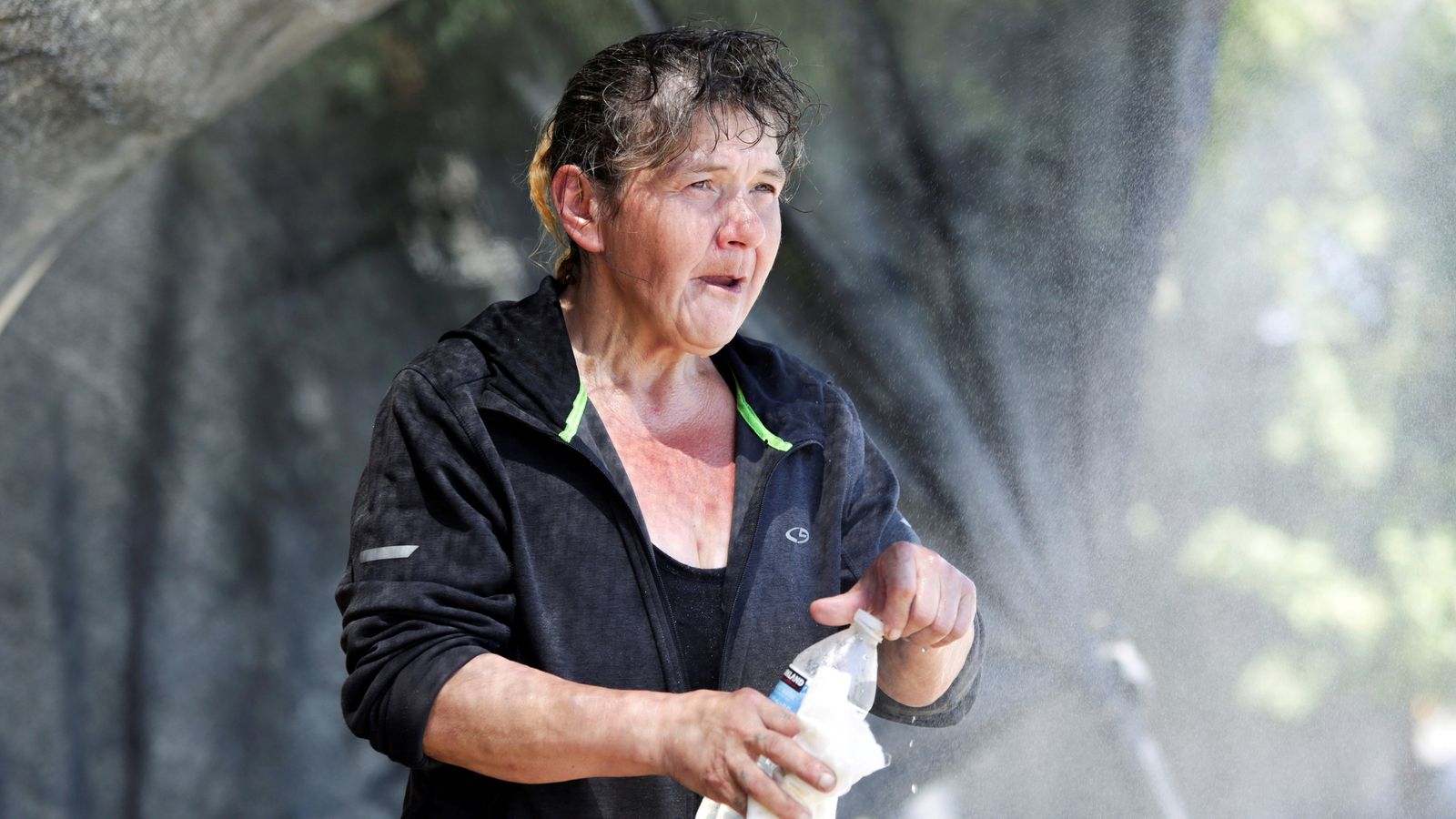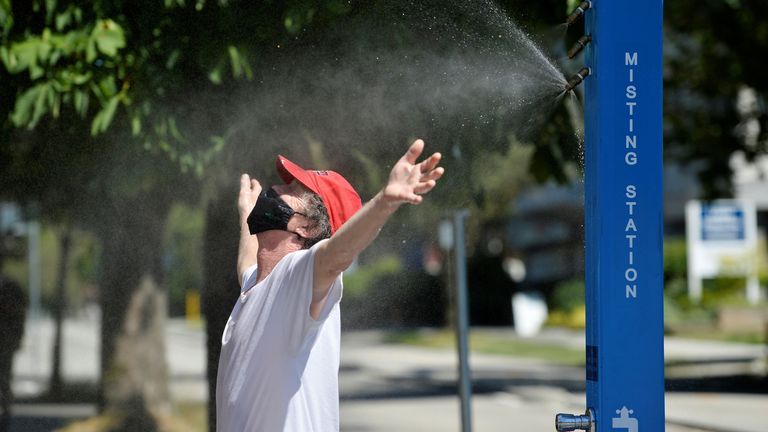Hundreds of people are thought to have died in a record-breaking heatwave sweeping across parts of the US and western Canada.
More than 700 “sudden and unexpected deaths” have been reported in British Columbia, Canada, over the past week – while nearly 100 deaths are being investigated as heat-related in Oregon in the US.
Deaths are also being investigated as heat-related in Washington state.
Medical staff who have treated people overwhelmed by the temperatures, which have been well above 38C, say the number of deaths from the extreme weather will keep creeping up.
The dangerous heat began on 25 June and only started to subside on Tuesday.
Lisa Lapointe, British Columbia’s chief coroner, said on Friday that 719 sudden and unexpected deaths have been reported in the province during the heatwave.
She added the number is three times more than what would normally occur during the same period.
Ms Lapointe also said the intense temperatures are believed to be a significant contributing factor in the jump, but the number is expected to increase as more information is compiled.
It comes as lightning strikes in western Canada over the past two days soared nearly tenfold from the same time a year ago.
Meteorologists said this was triggered in part by the heatwave and warned of more strikes over the weekend that could stoke further forest fires fanned by high winds.
More than 710,000 lightning strikes were recorded in British Columbia and western Alberta between 3pm on Wednesday 30 June and 6am on Thursday 1 July, up from an average 8,300 from the same period over the past five years.
The strikes caused several forest fires across central British Columbia, with 136 fires burning as of Friday afternoon, officials said at a briefing.
People in more than 1,300 homes have been ordered to evacuate and it is not known how many people are missing. The Red Cross is running a phone line for family reunification, officials said.
The number of deaths in Oregon has reached at least 95, with most occurring in Multnomah County, which encompasses Portland.
The deaths include an Guatemalan immigrant who collapsed as he worked at a plant nursery in a rural Oregon town during the soaring heat.
Washington state authorities have linked about 30 deaths to the heat, with more reports coming in each day this week.
Dr Steve Mitchell, director of Harborview Medical Center’s Emergency Medicine Department in Seattle, said: “I think, over time, we will understand that the numbers are only going to climb.
“I know, in my experience, that I’m expecting to see much larger numbers than what we are currently able to report because of talking to EMS colleagues who were experiencing twice as many calls for help that day.”
There were 1,792 emergency room visits for suspected heat-related illness since 25 June, the Washington state Department of Health said Thursday.
Of those visits, 21% required people to be admitted to the hospital.
Monday had the most emergency room visits, with 702, the health department said.
It was the hottest day of the heat wave in many areas, with Seattle, Portland, Oregon, and other cities smashing all-time heat records. It reached 42C in Seattle and 47C in Oregon’s largest city.
Mr Mitchell continued: “With this latest heat emergency, when we were dealing with it, the only thing comparable at Harborview and in the region that we’ve experienced recently was actually the early days of COVID.”
Forecasters blamed the temperatures on a “heat dome” that parked a strong high pressure system over the region.
Subscribe to ClimateCast on Spotify, Apple Podcasts, or Spreaker.
Temperatures cooled considerably in western Washington and Oregon by Tuesday, though a heat warning was still in effect for parts of the interior Northwest and Canada.
Experts say the hot weather is a harbinger of things to come as climate change affects global weather patterns.
The extraordinary heat wave stretched into the upper reaches of California, where several wildfires erupted in the hot, dry conditions, making it difficult for firefighters trying to beat back the flames that have driven thousands from their homes in mountain communities and burned several residences.


